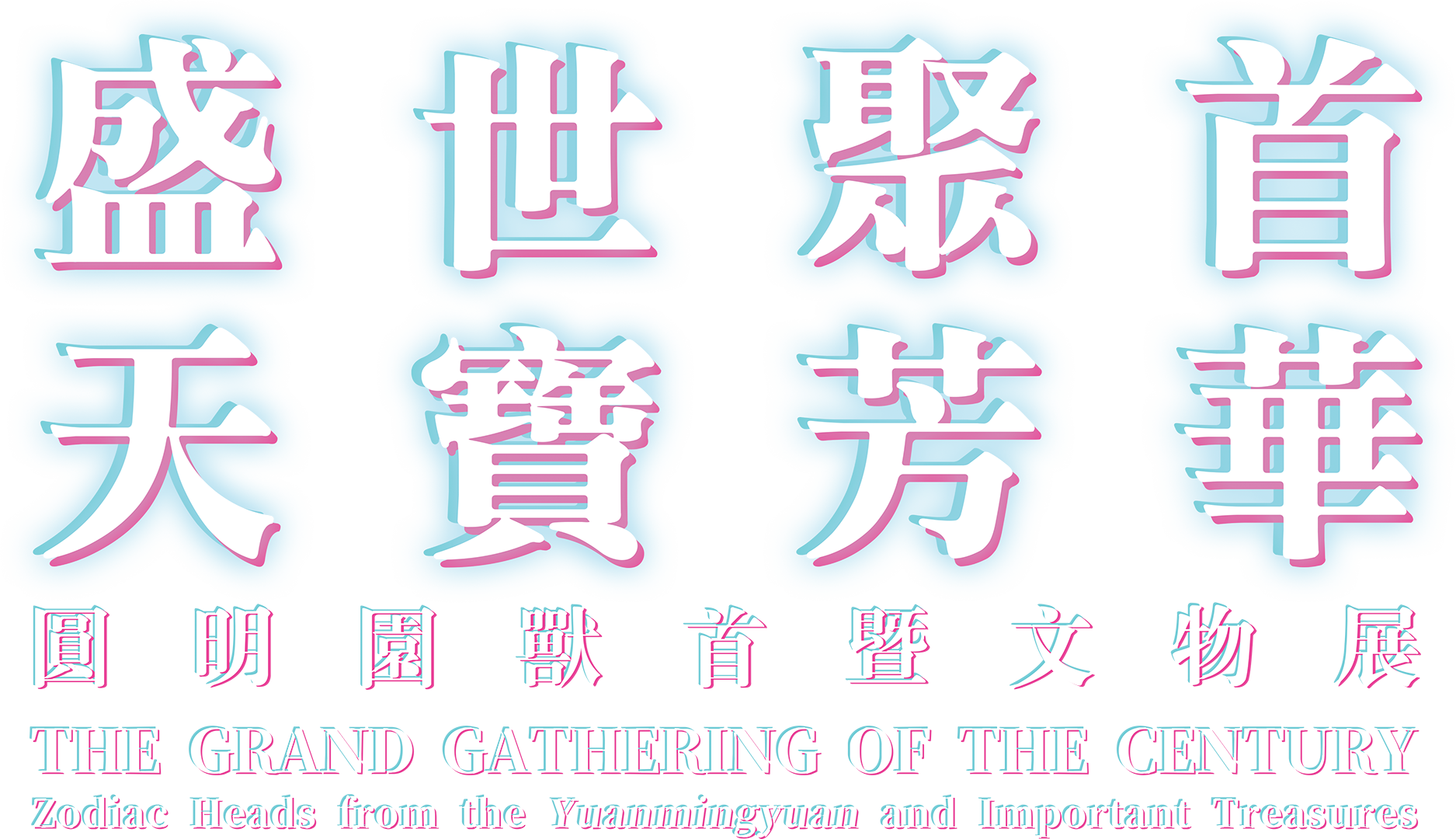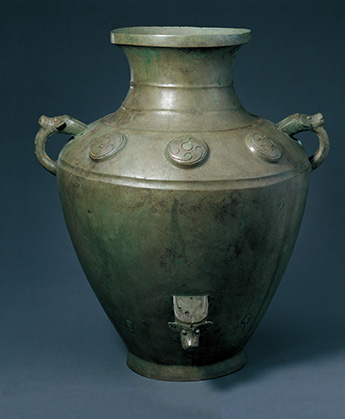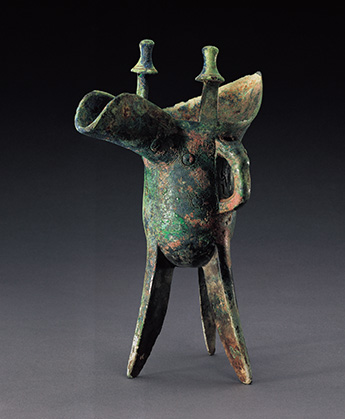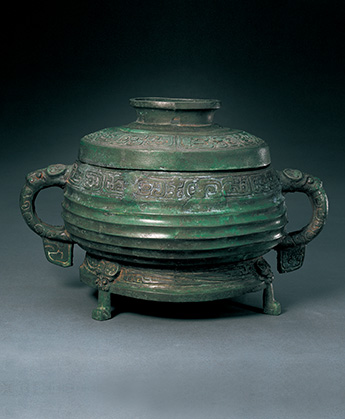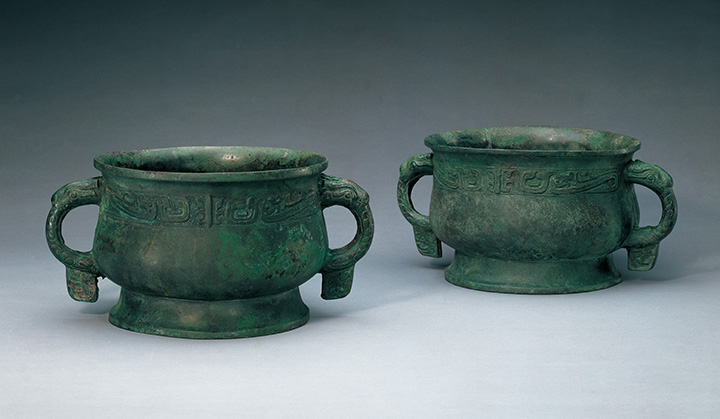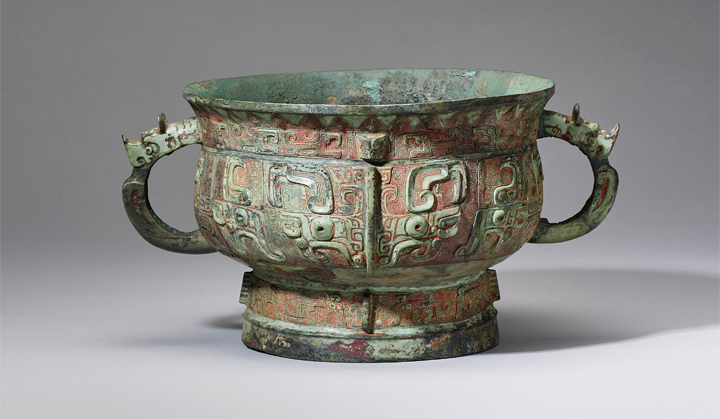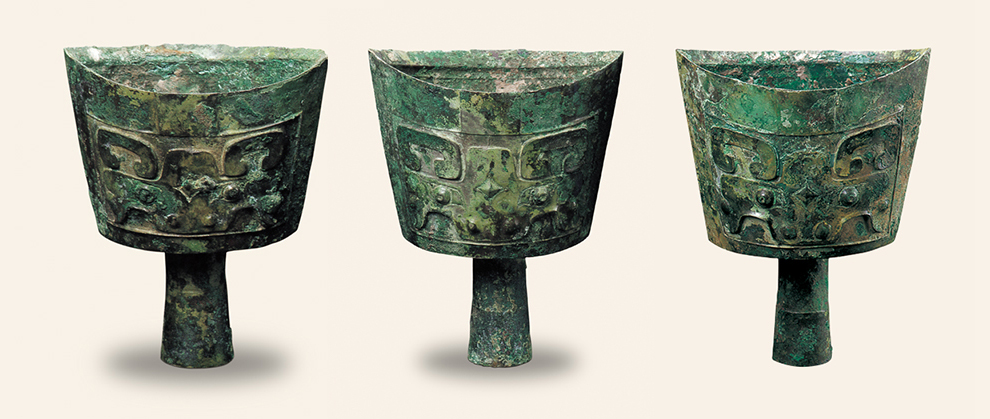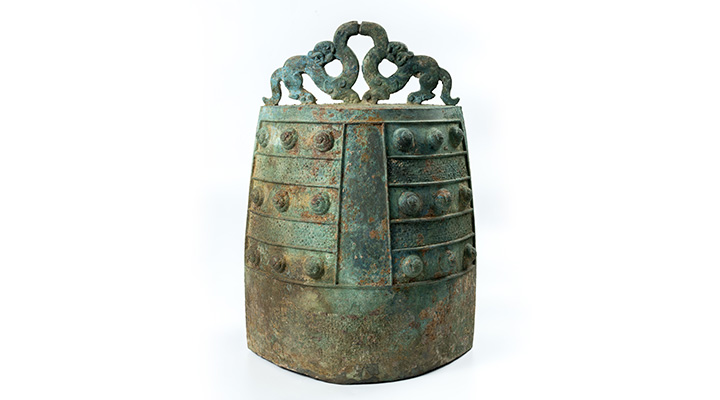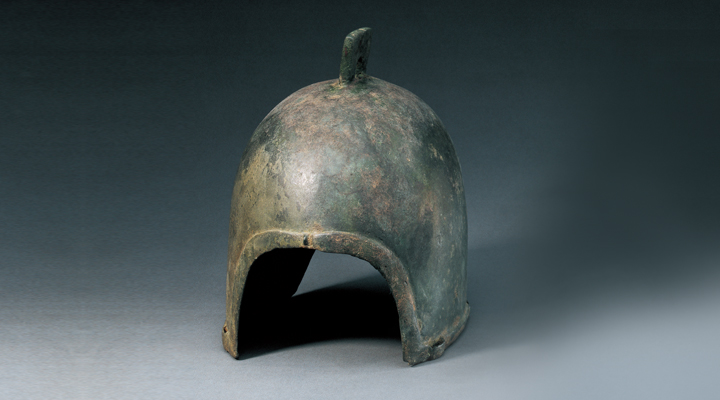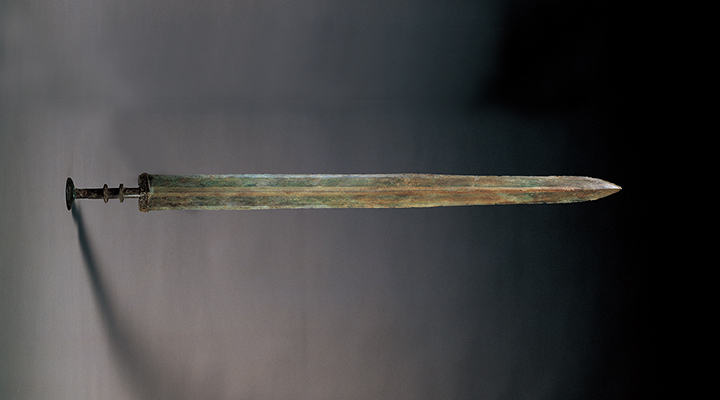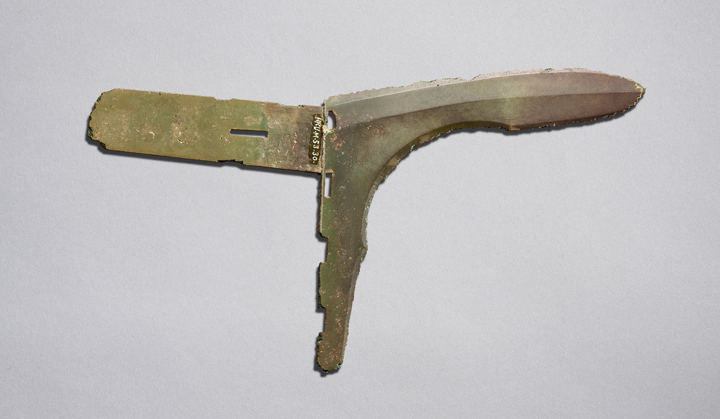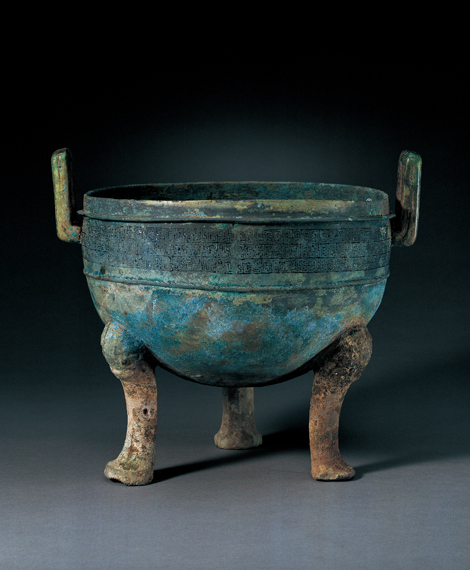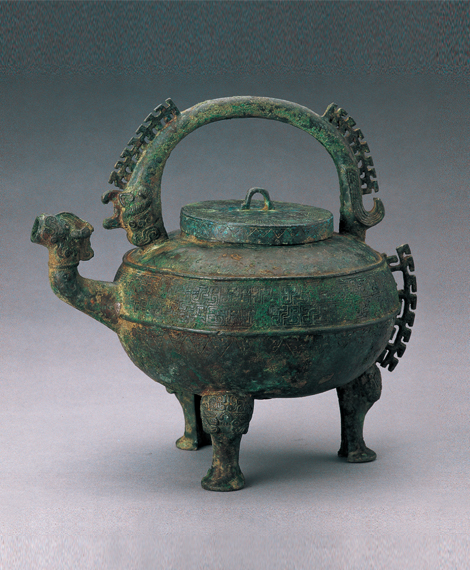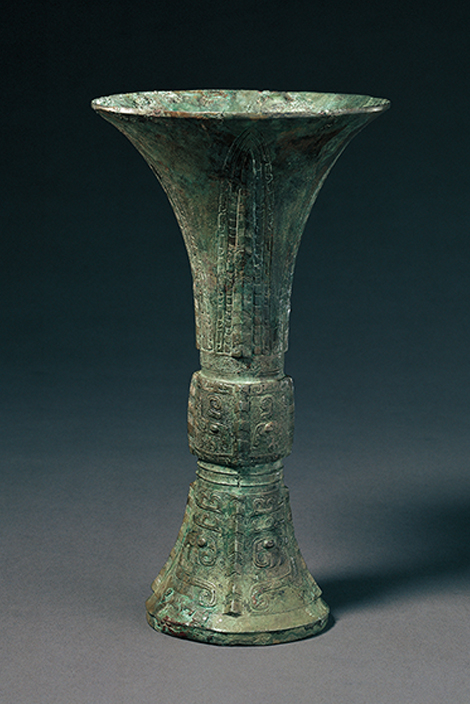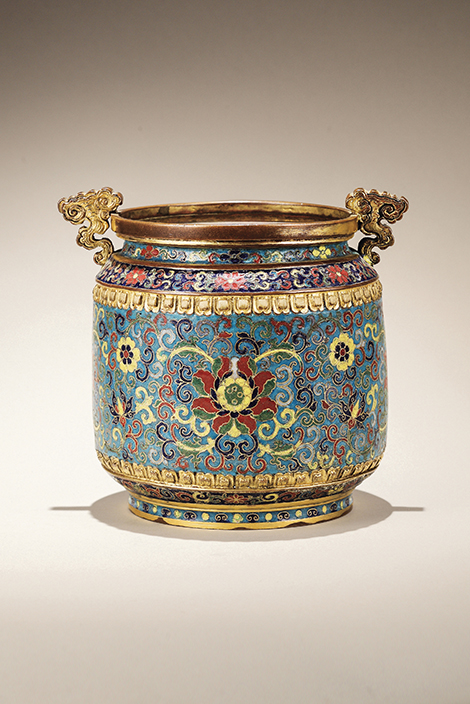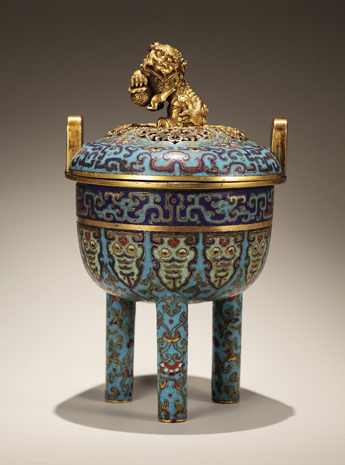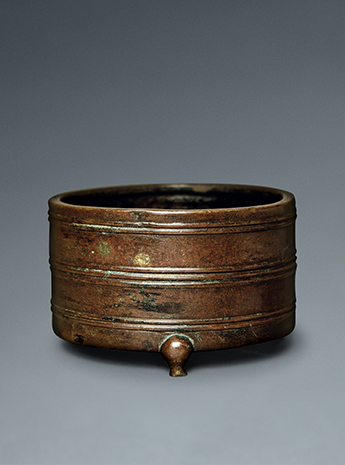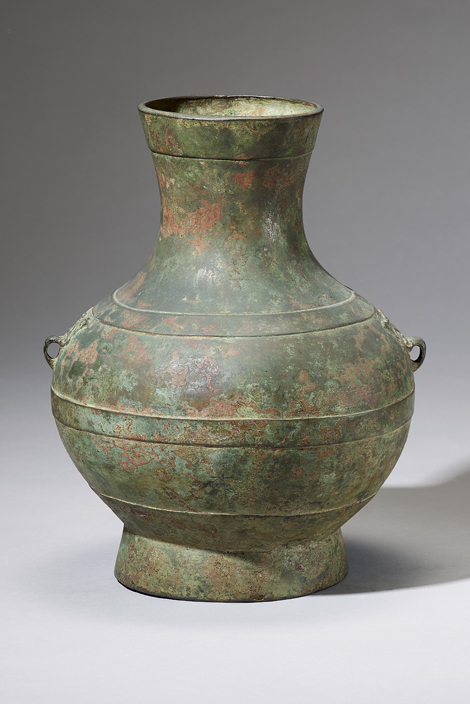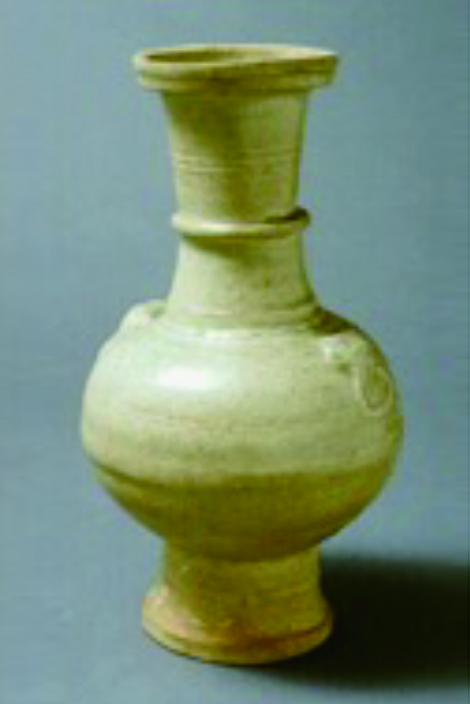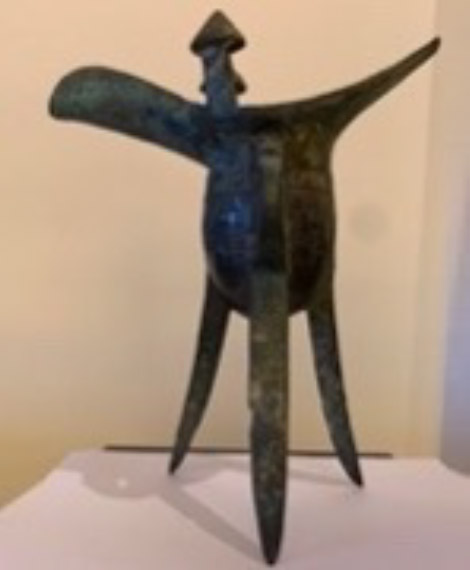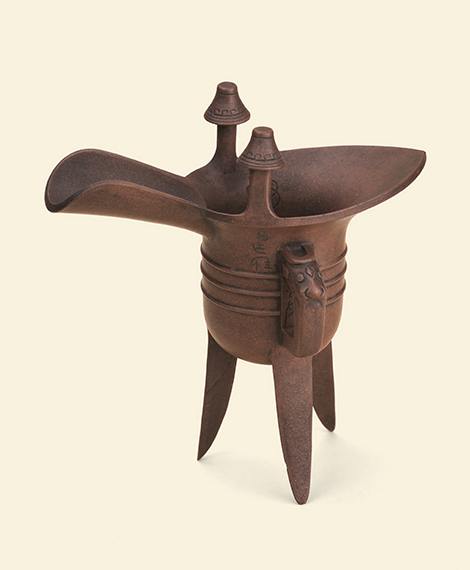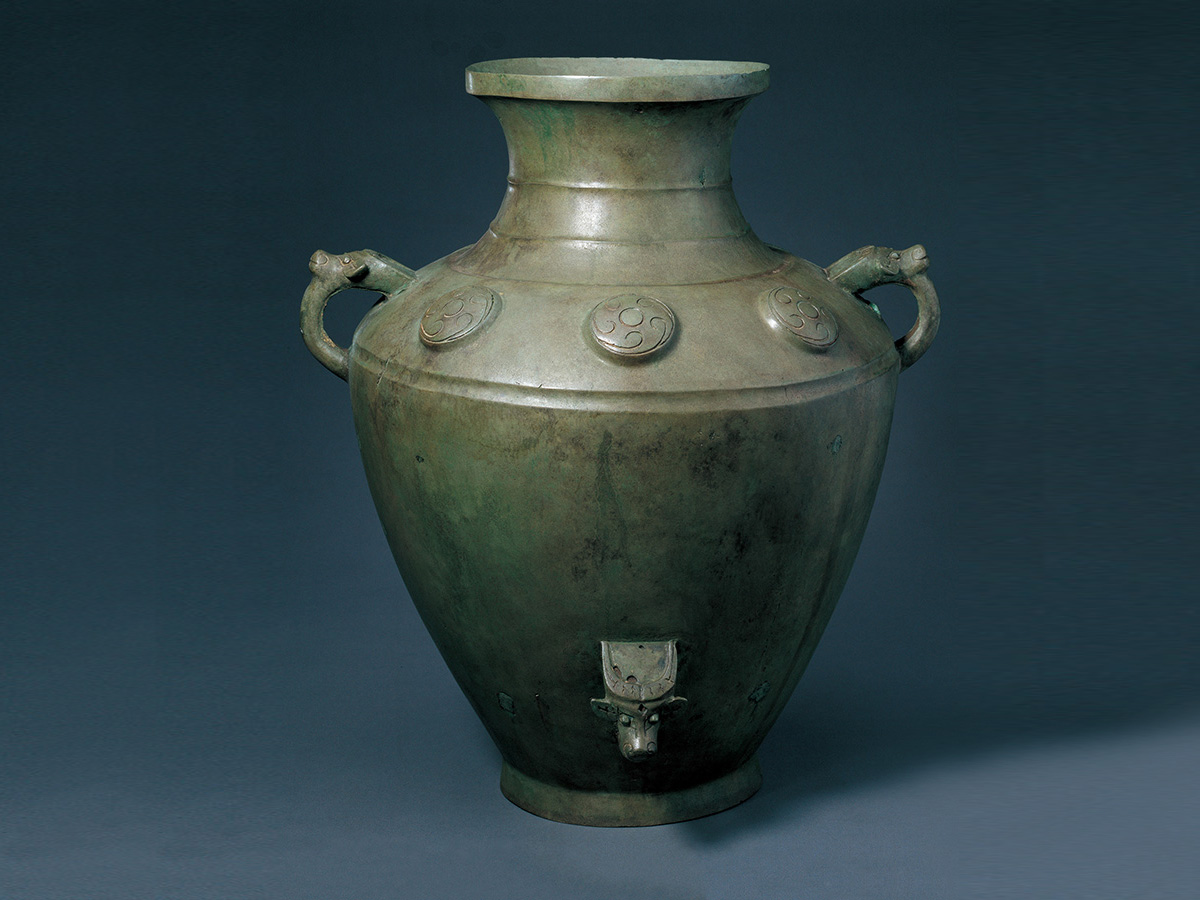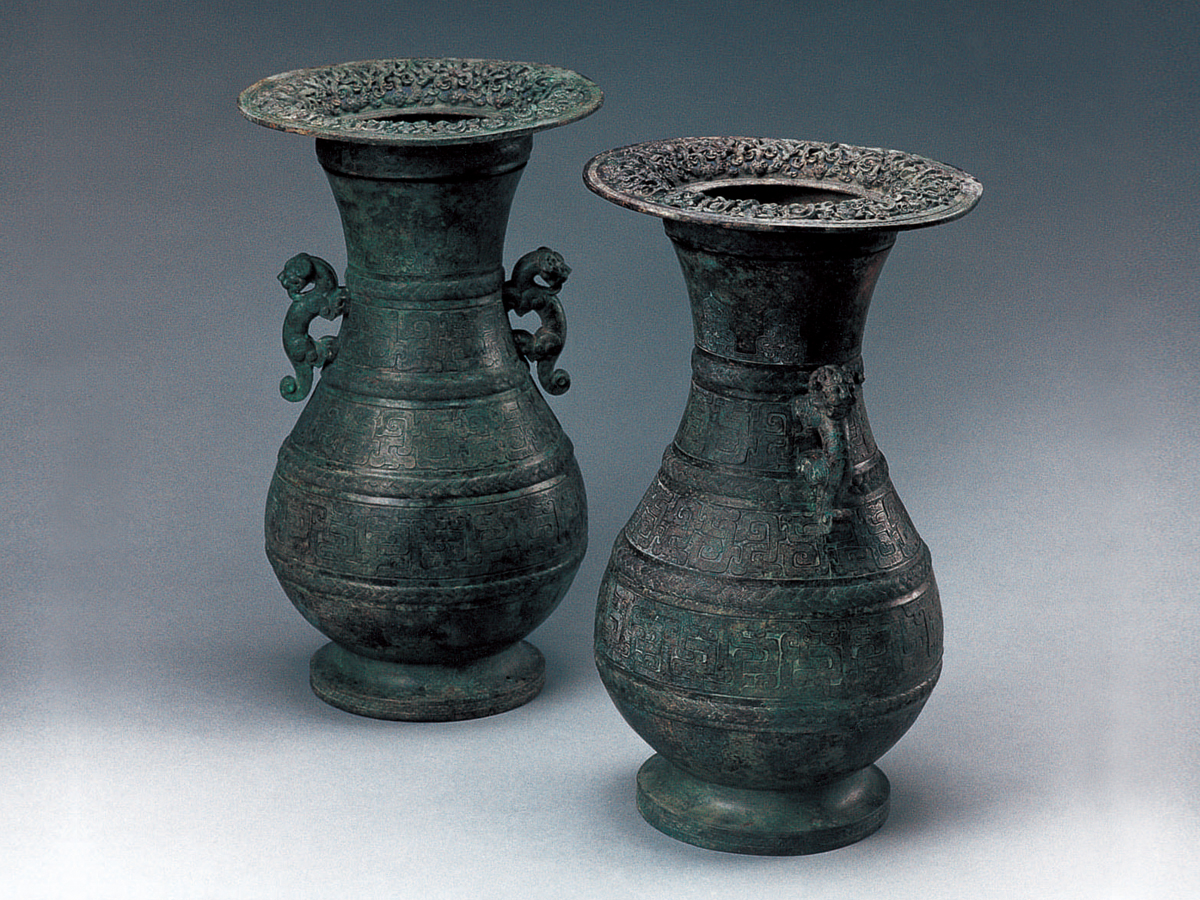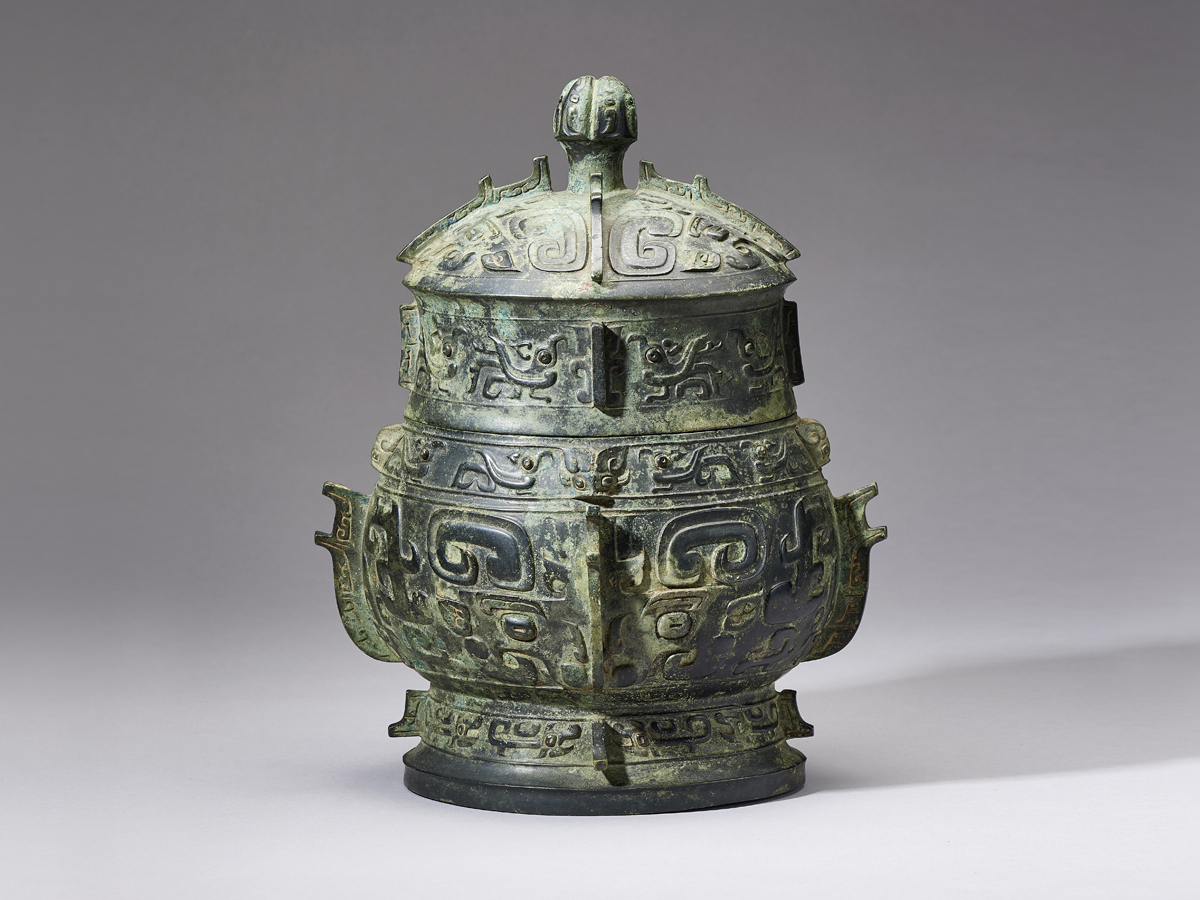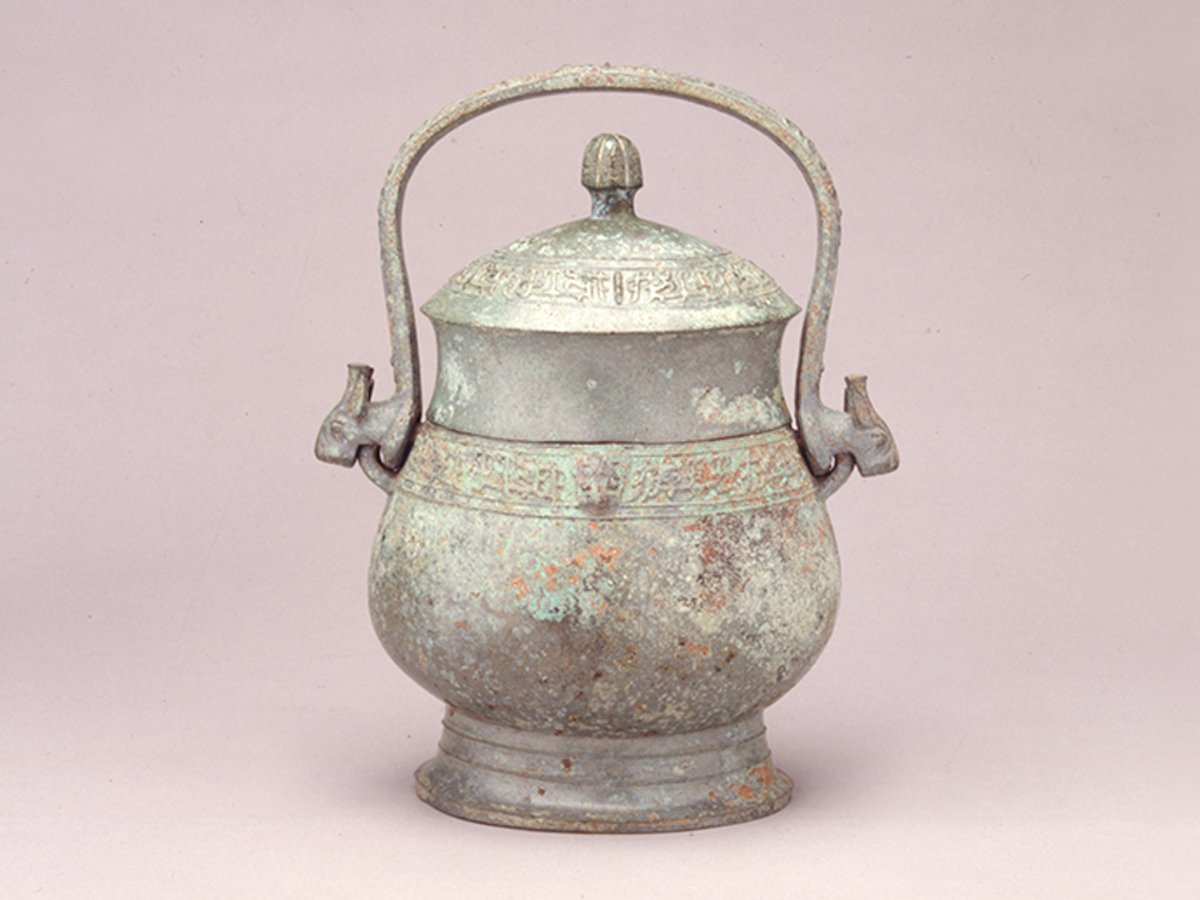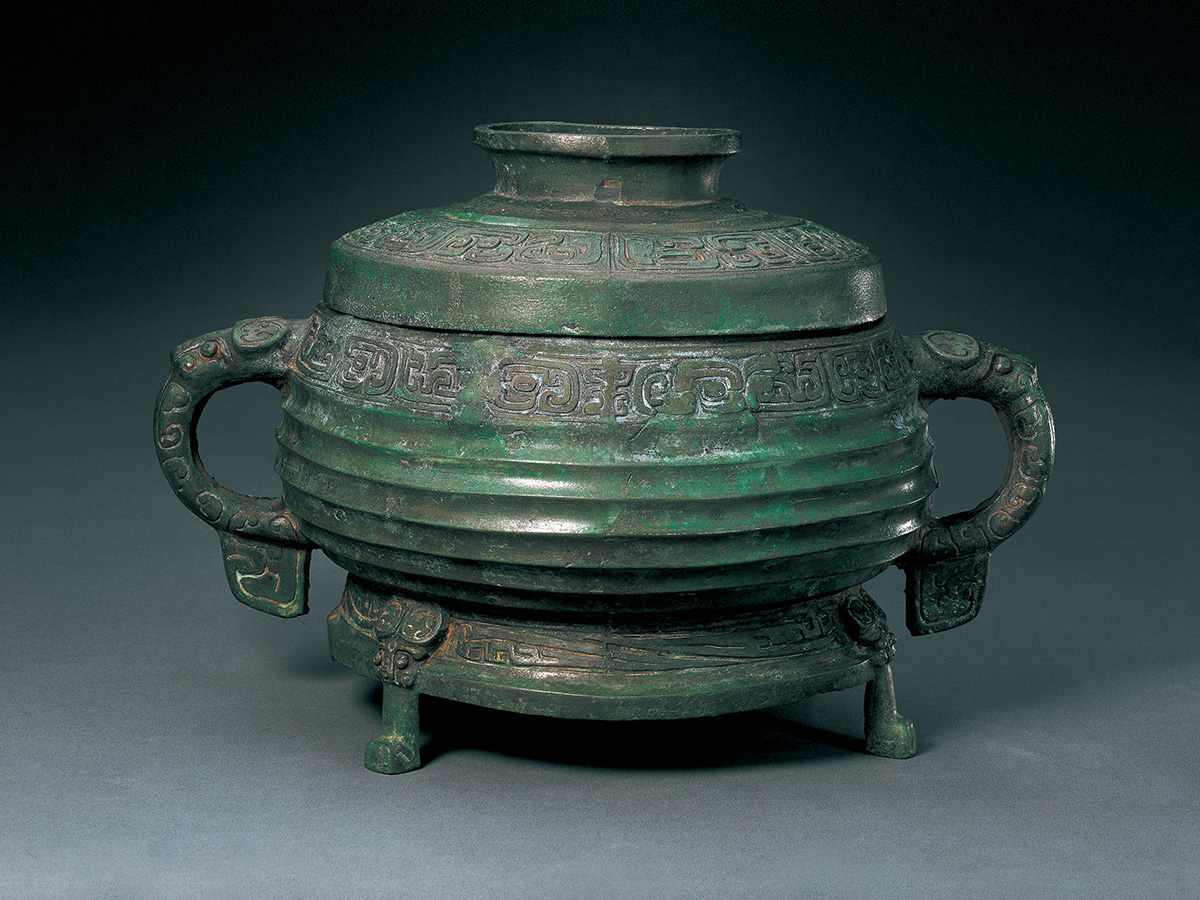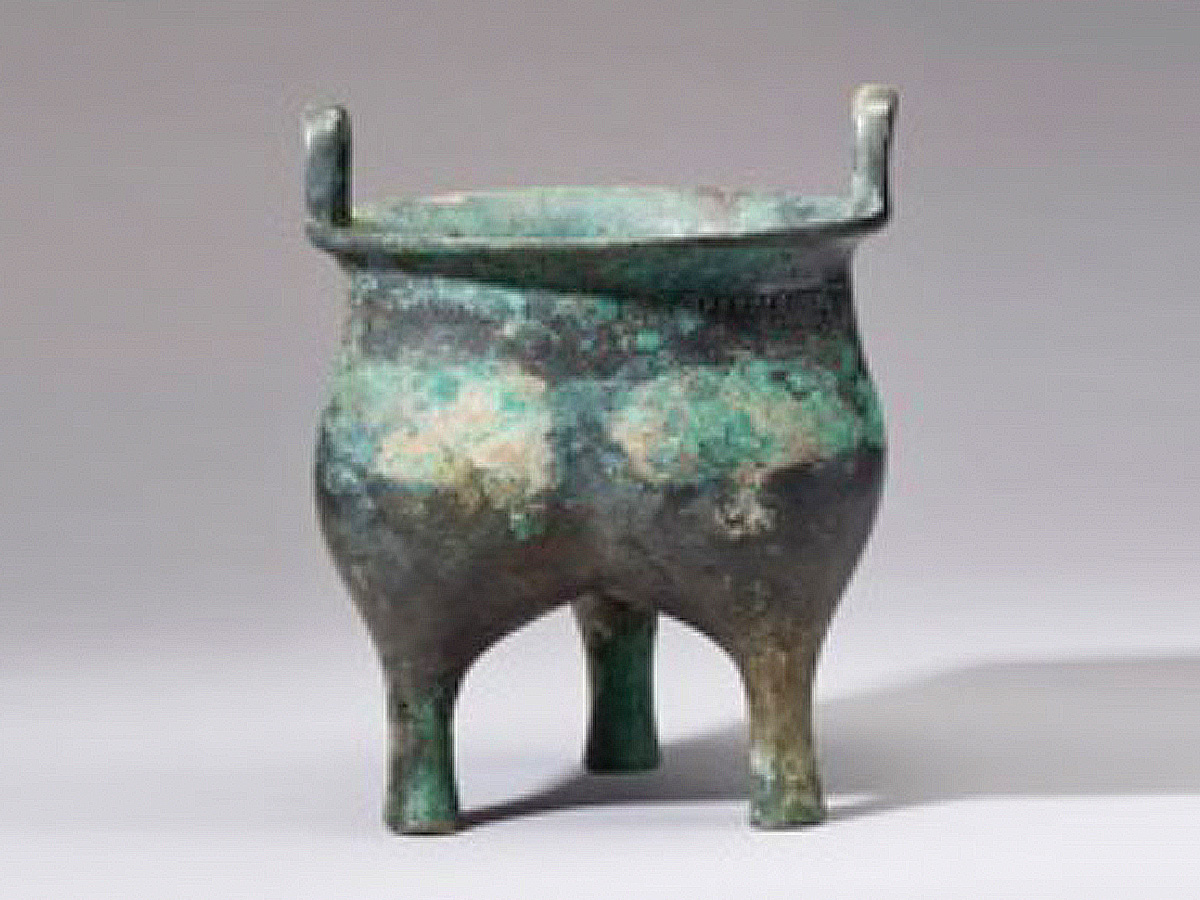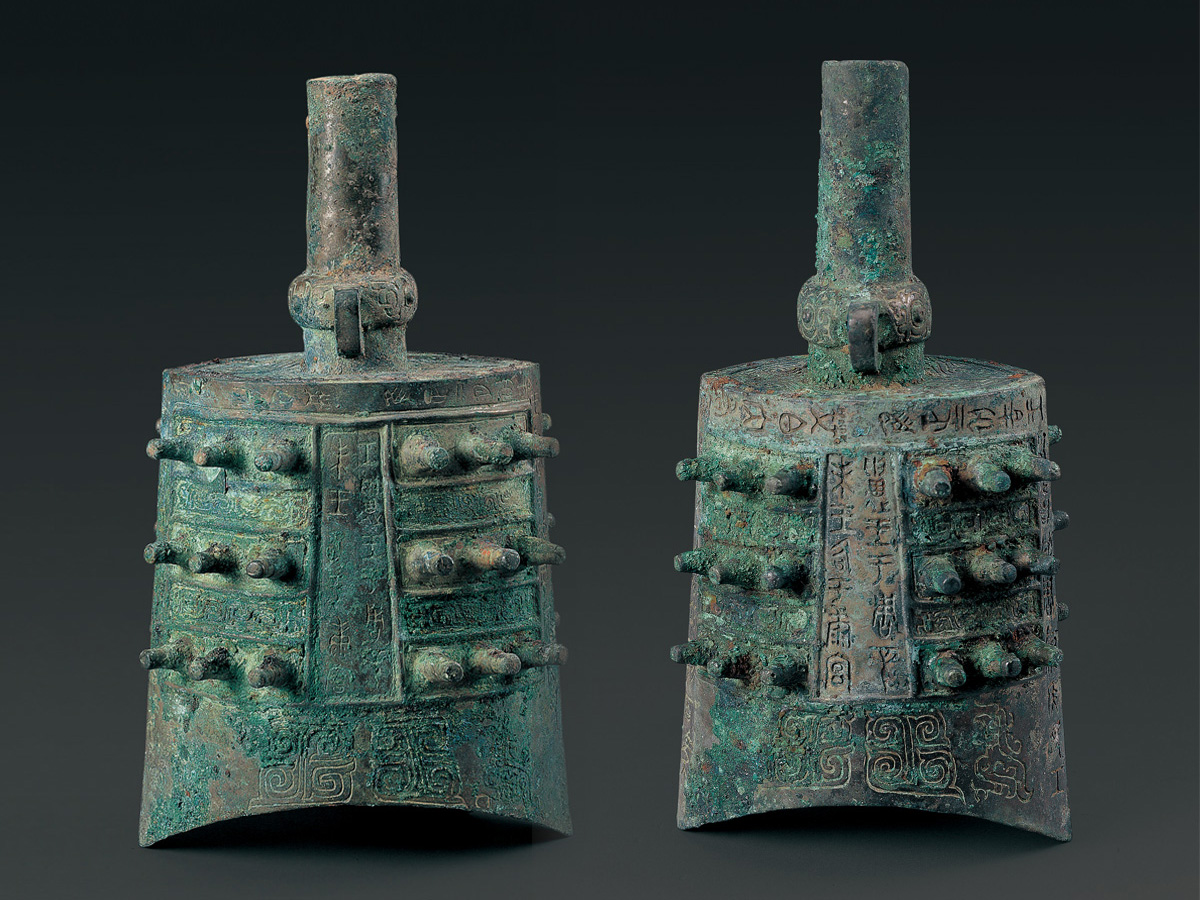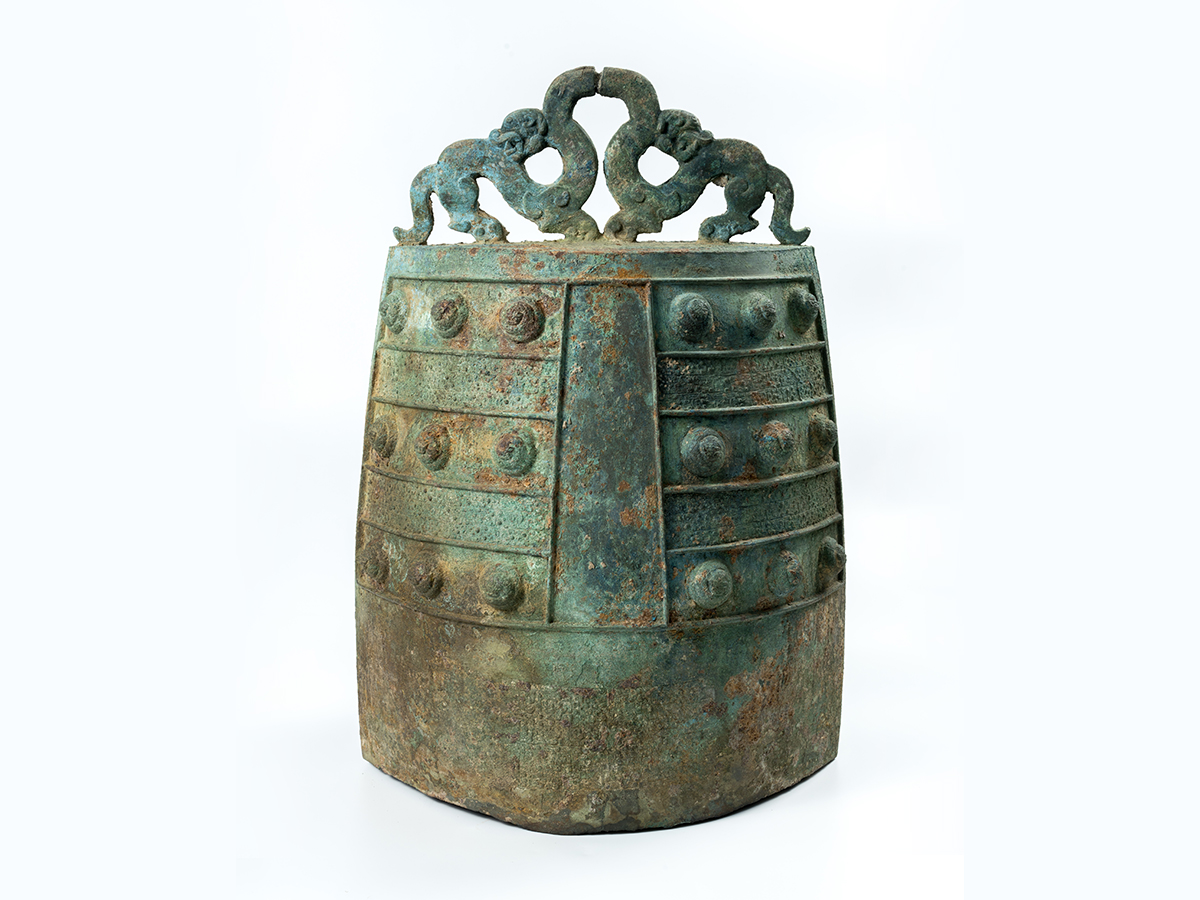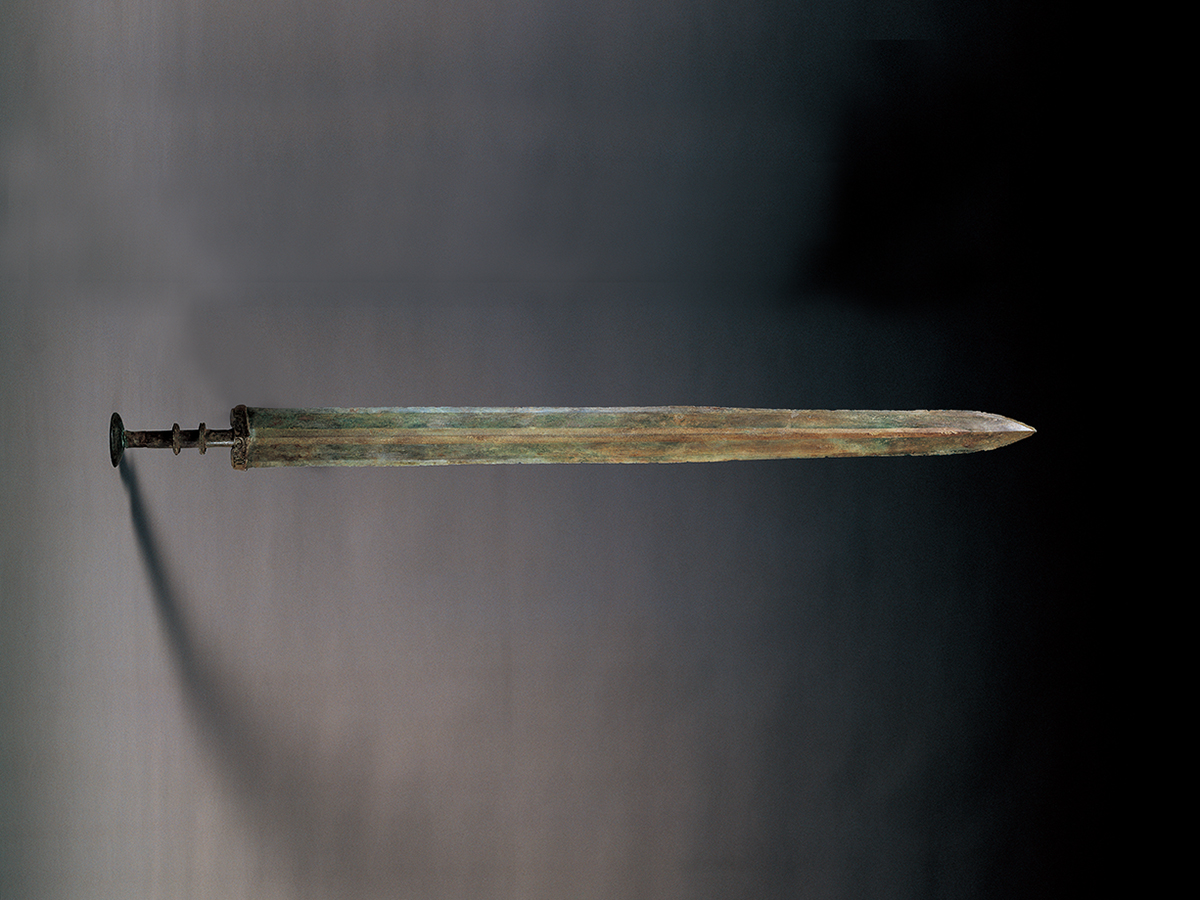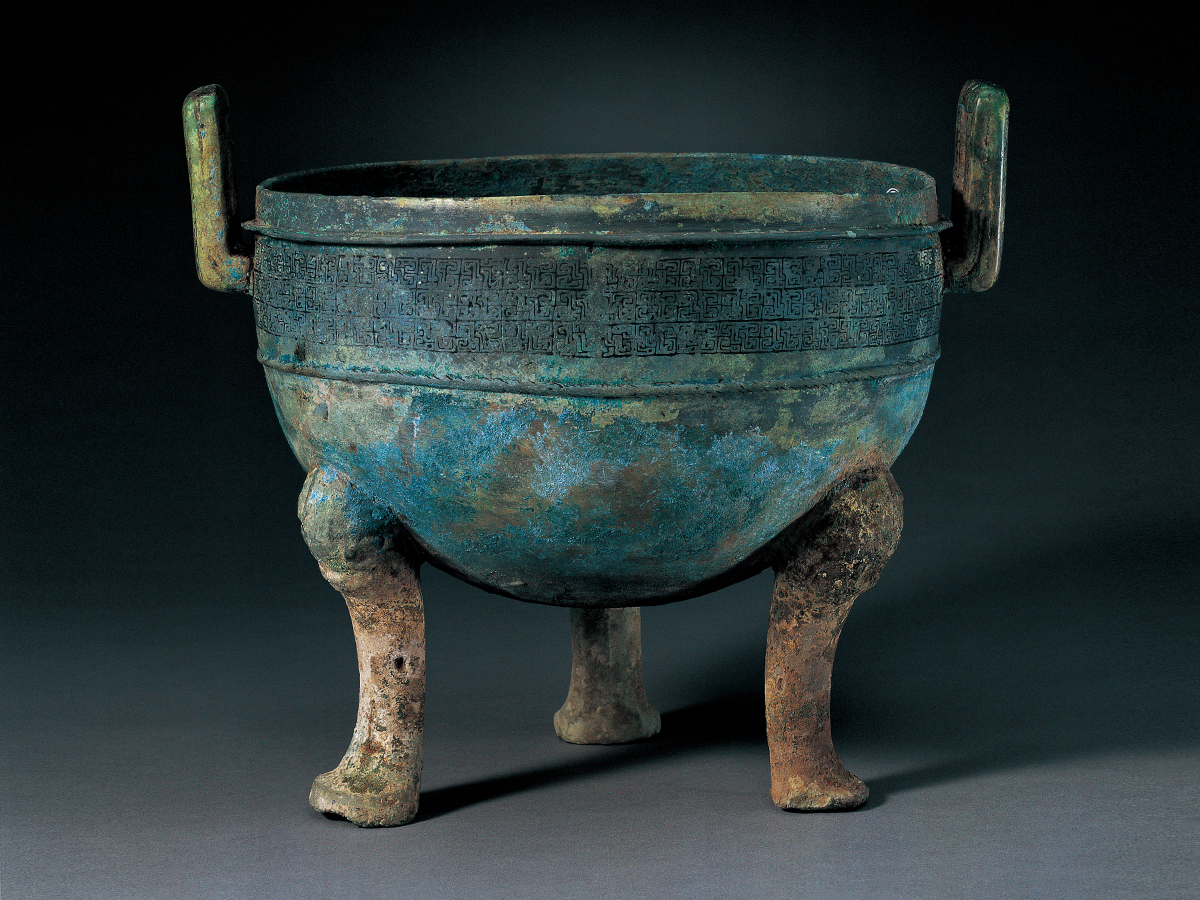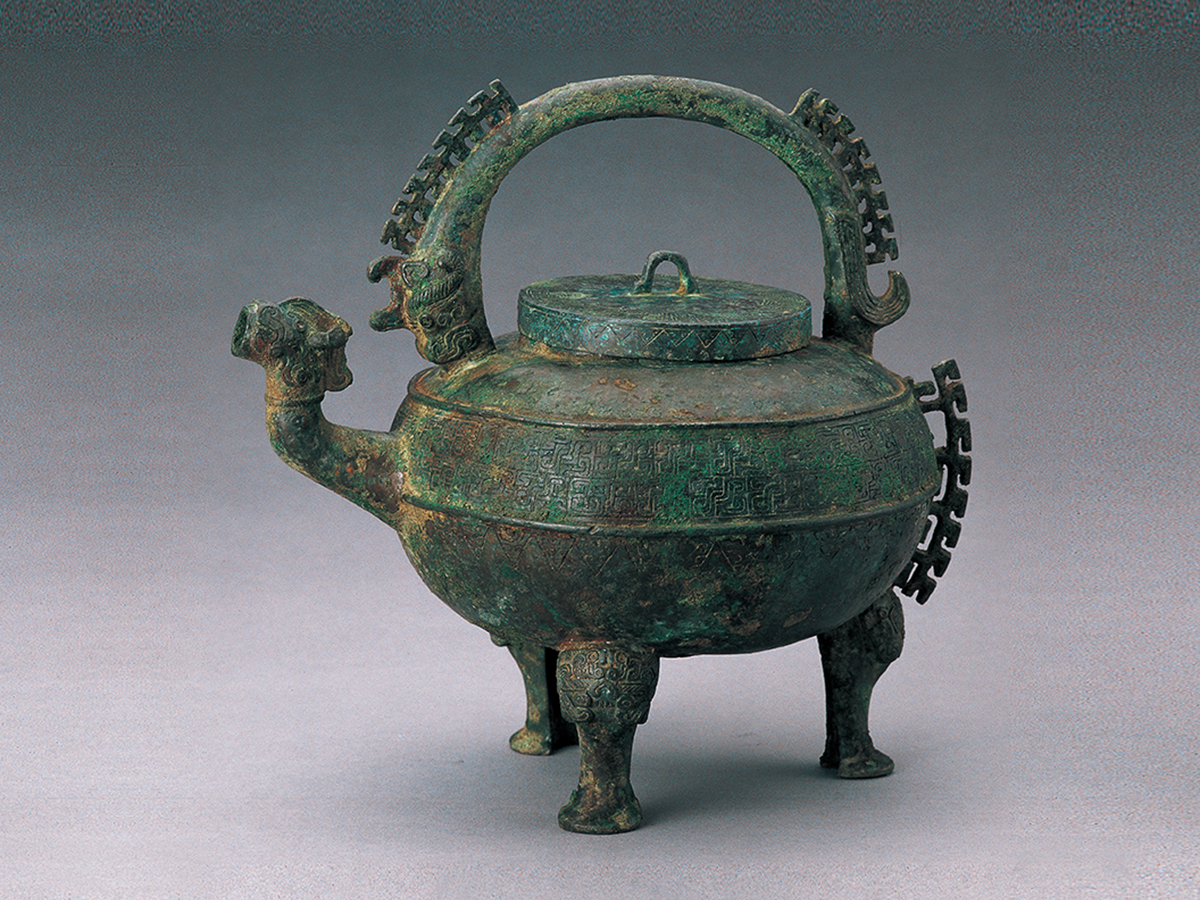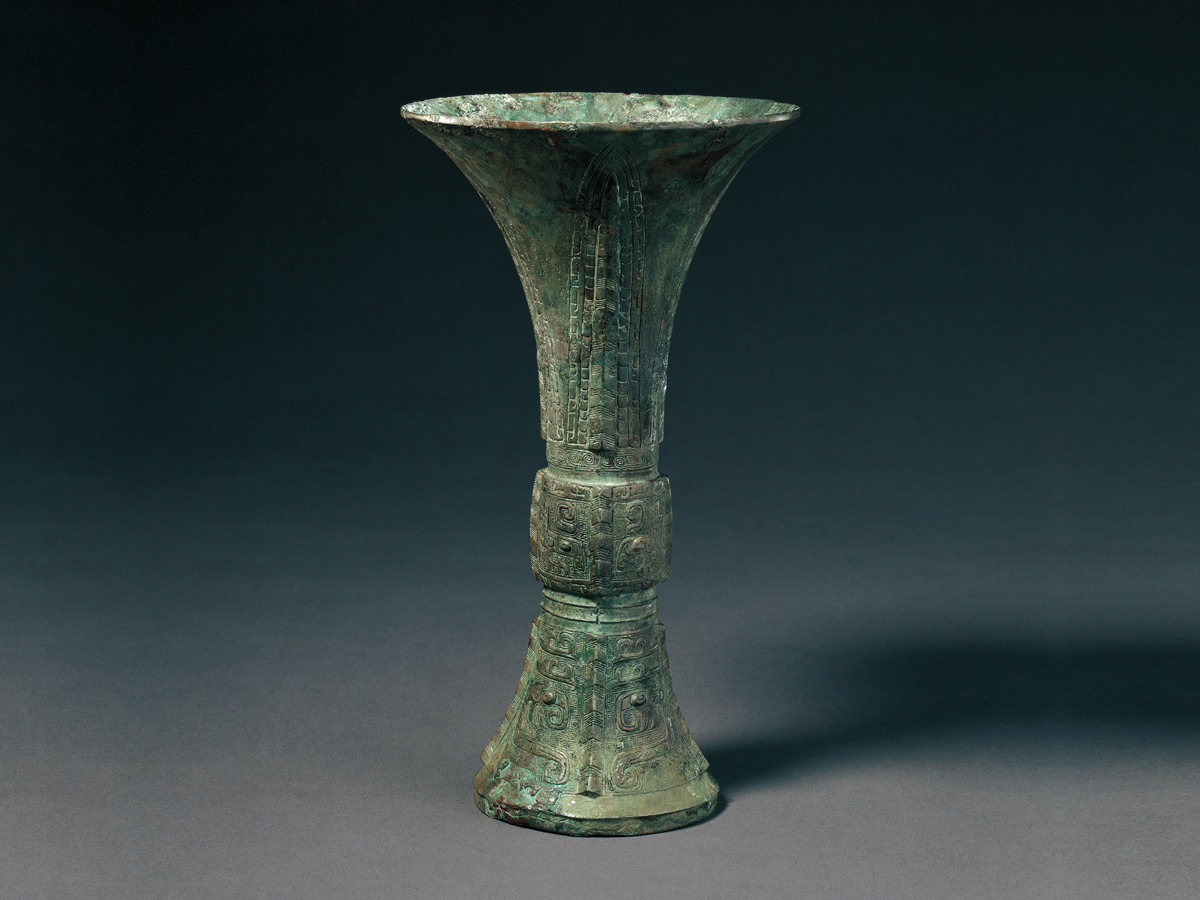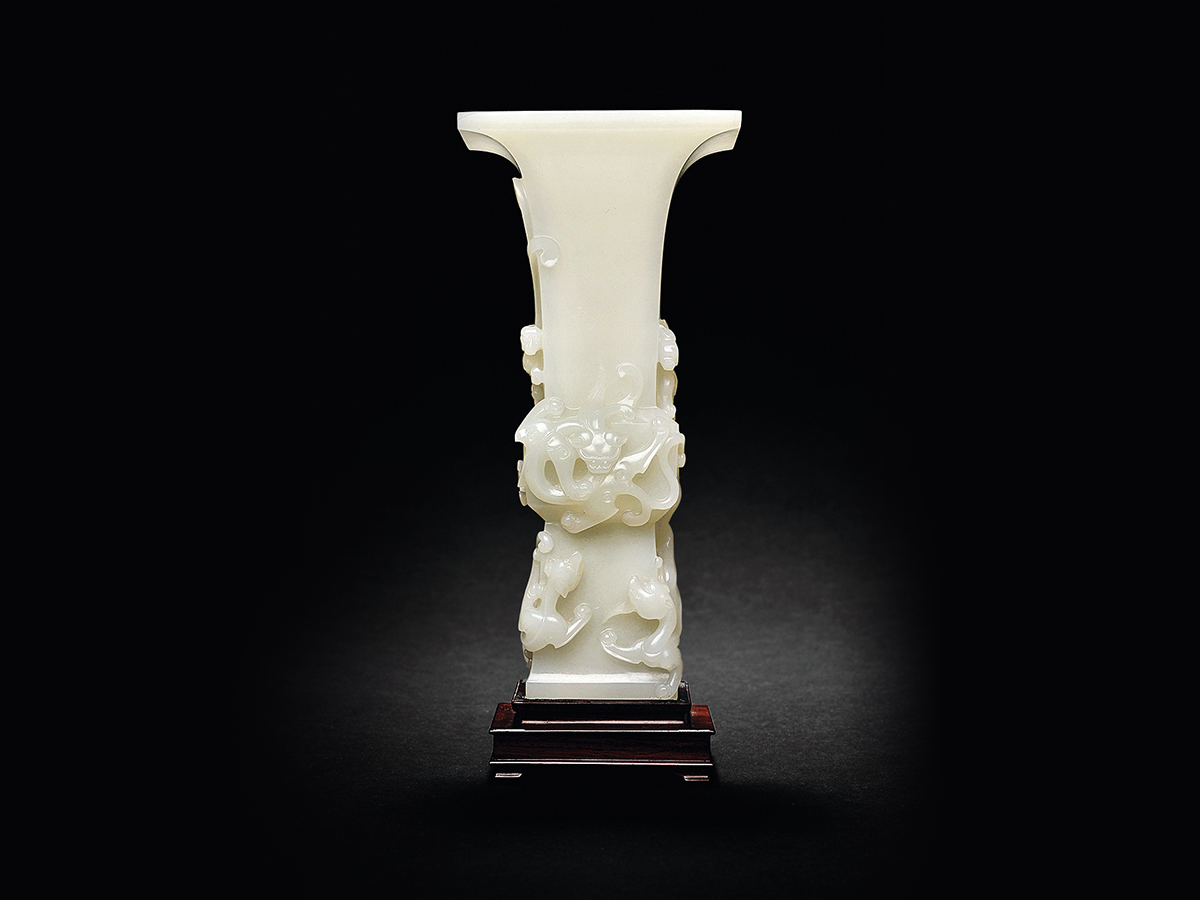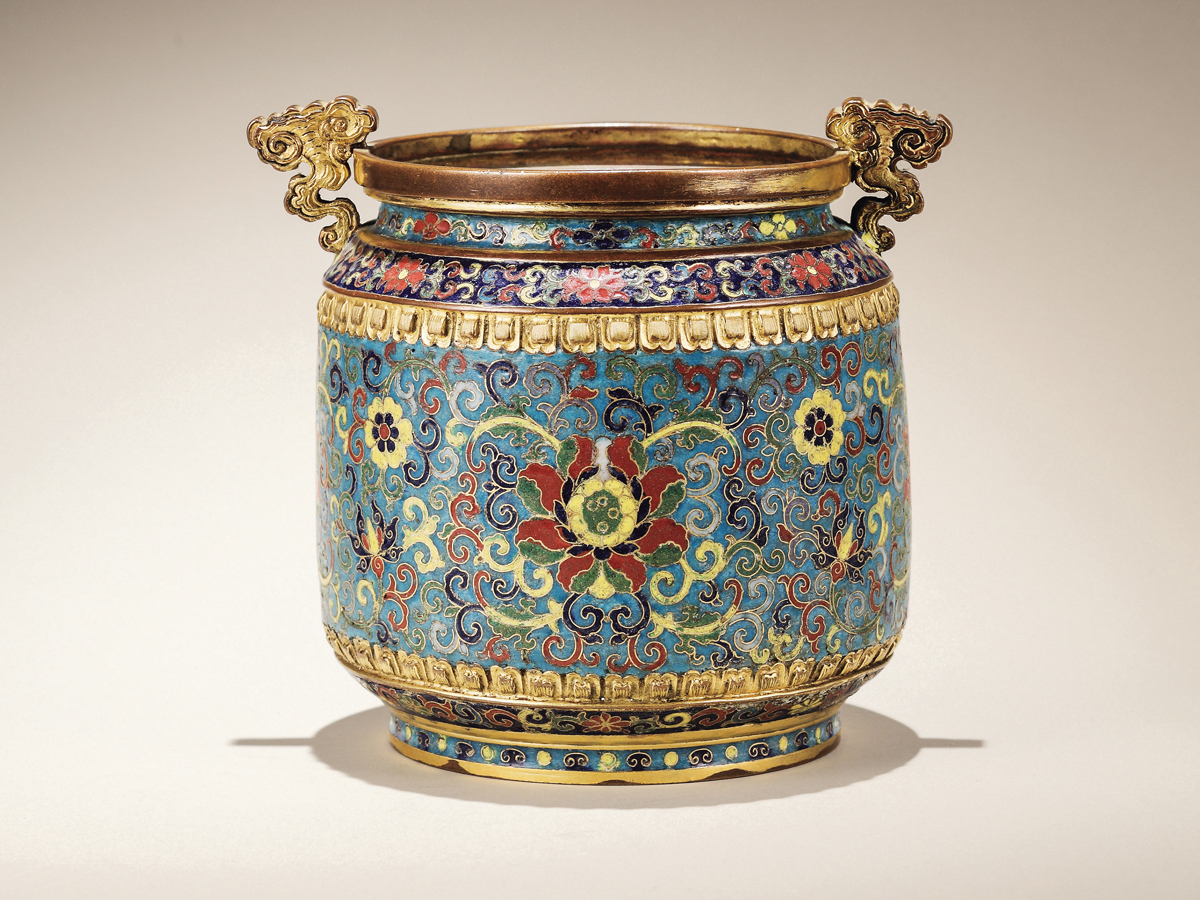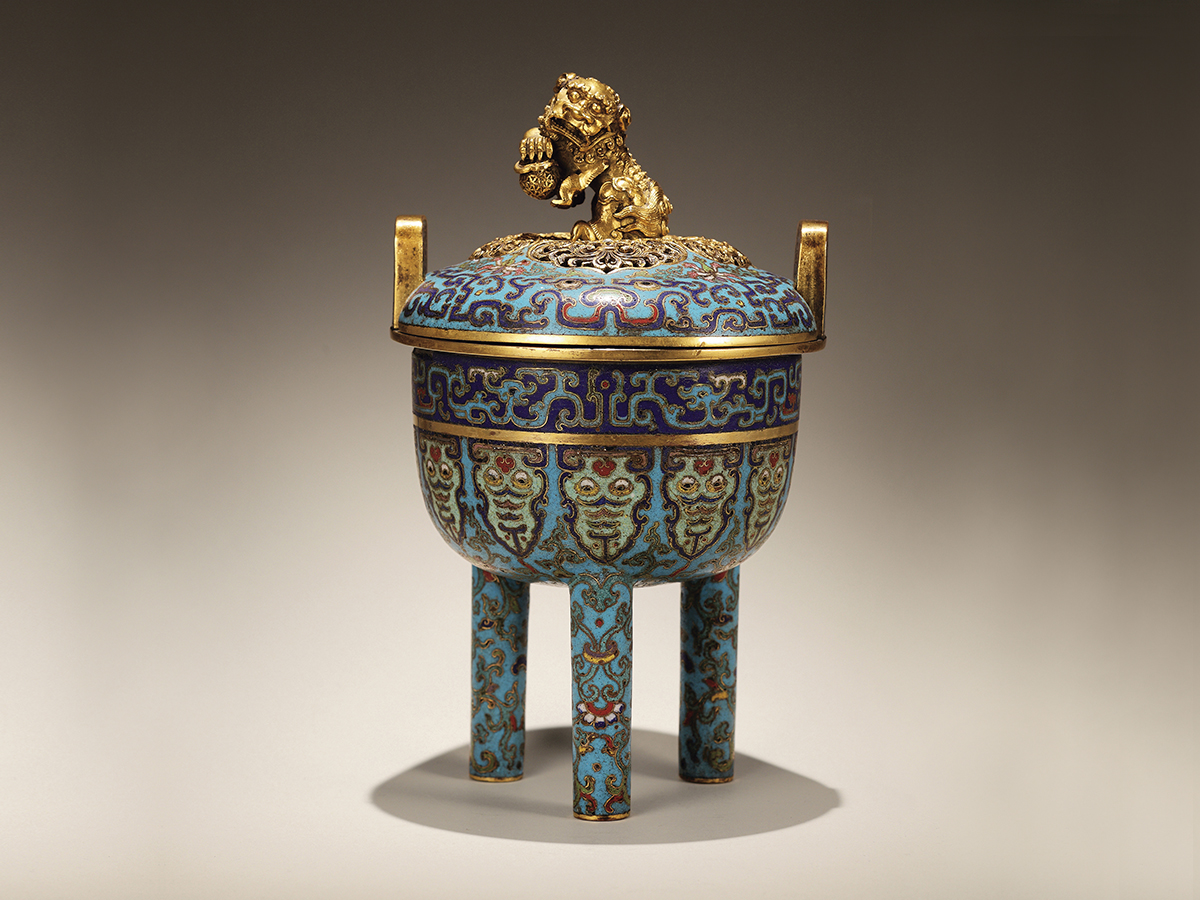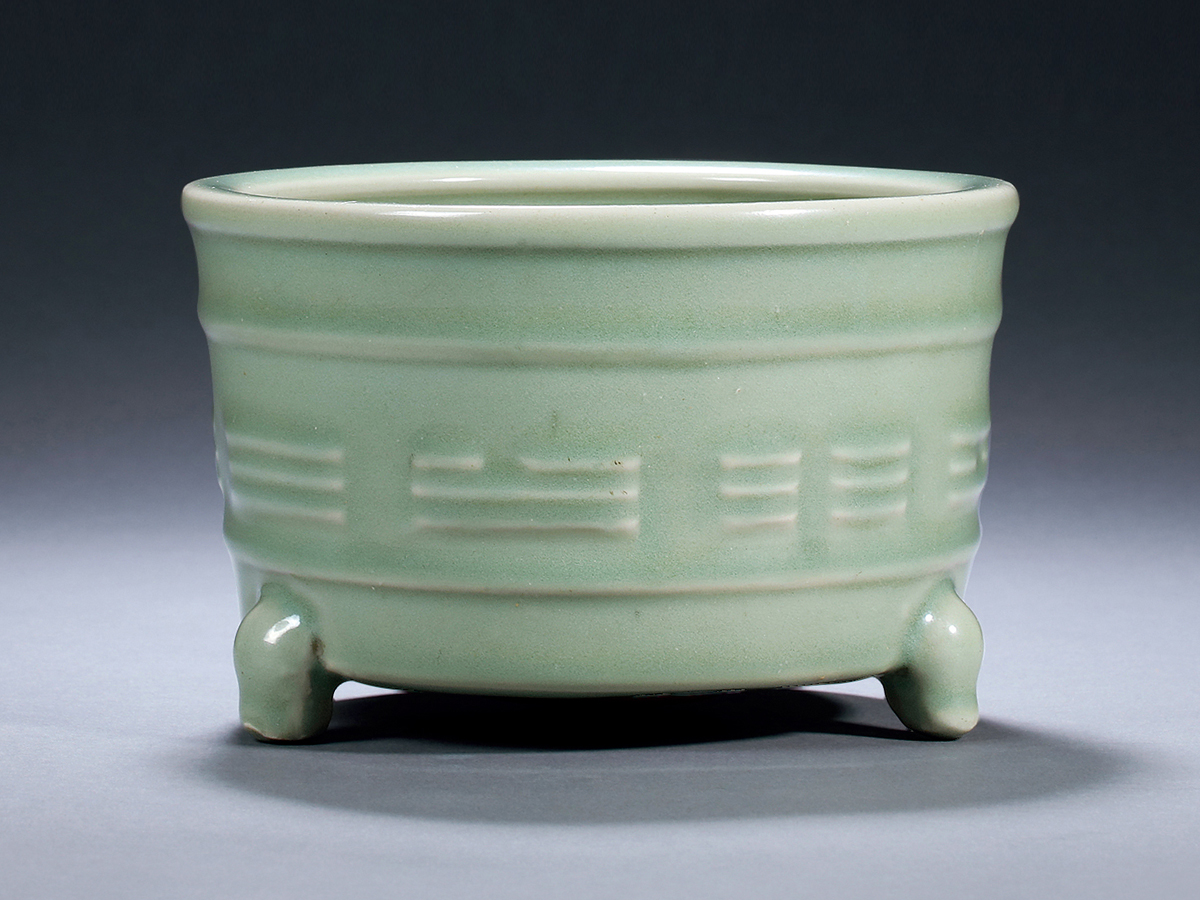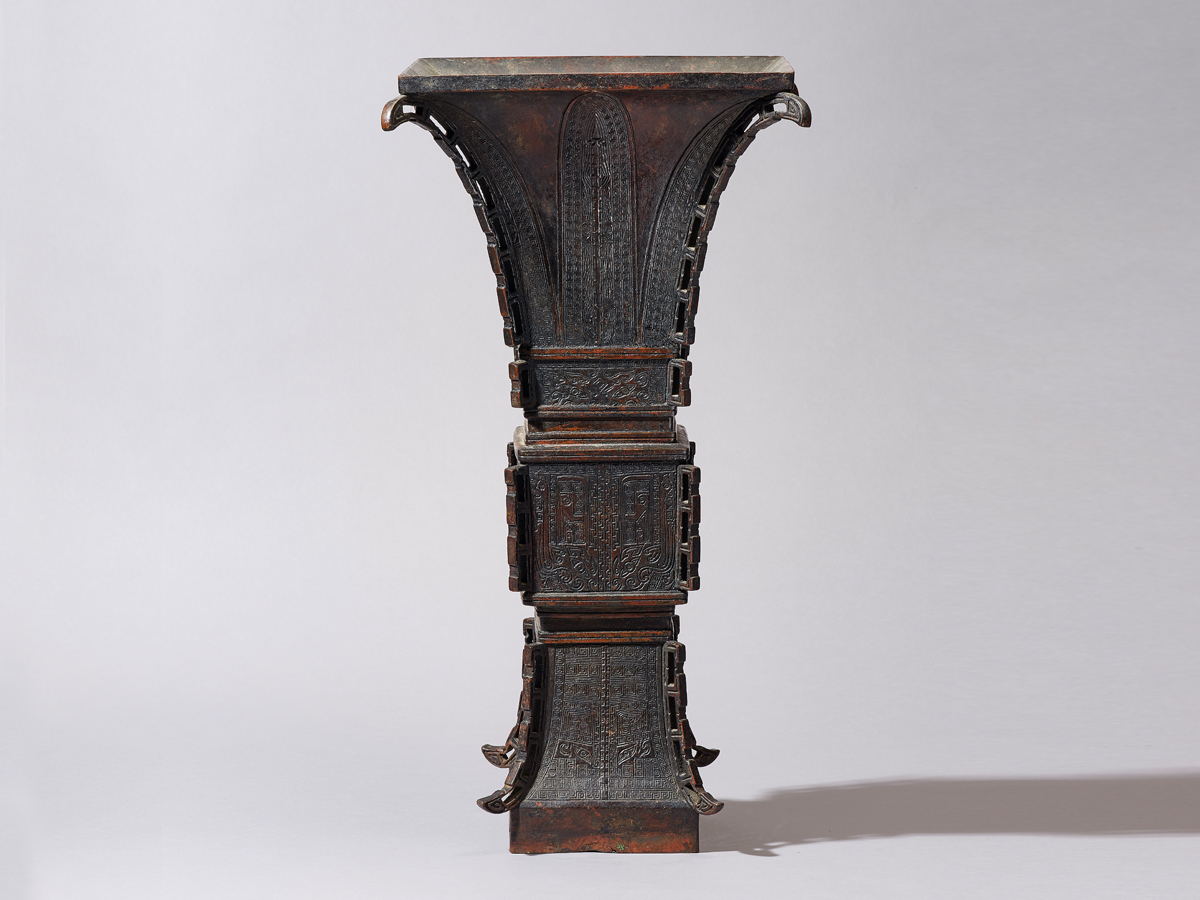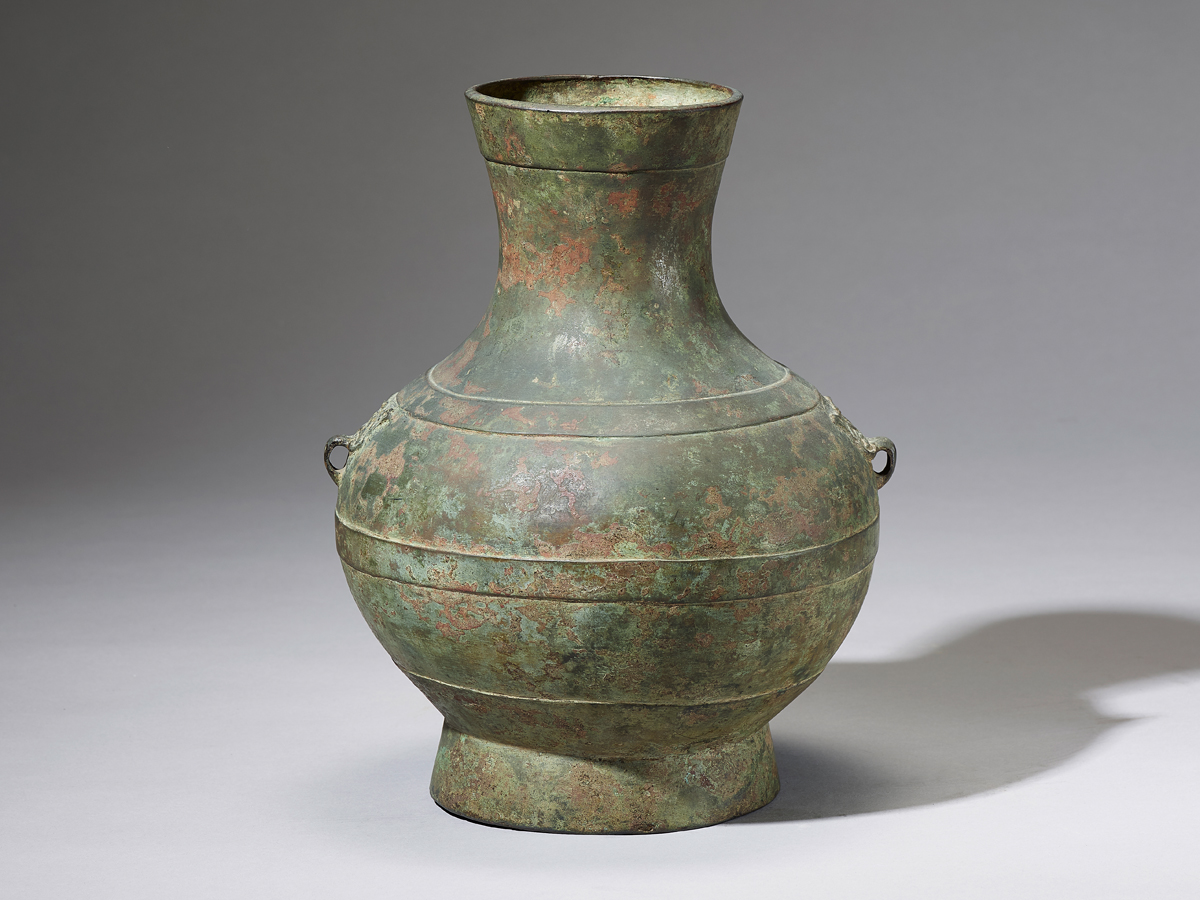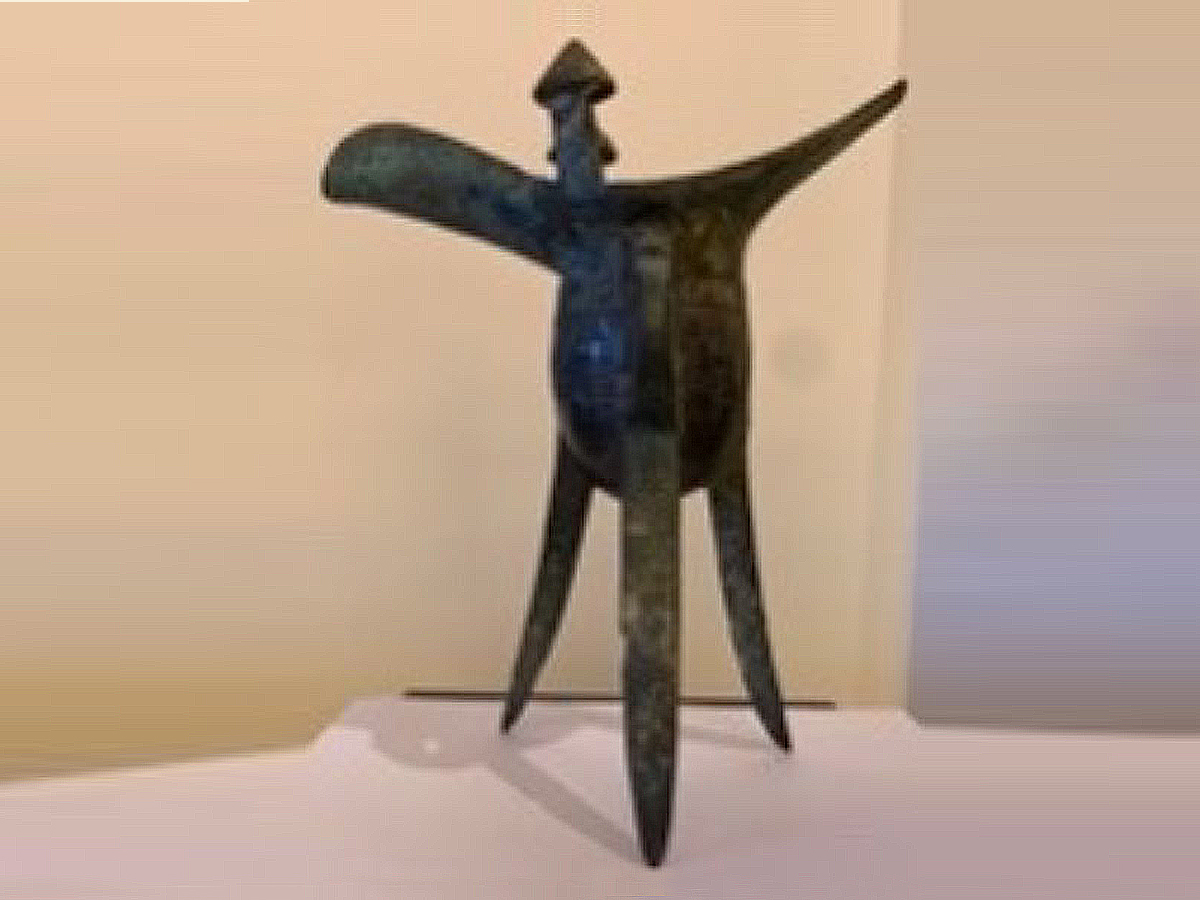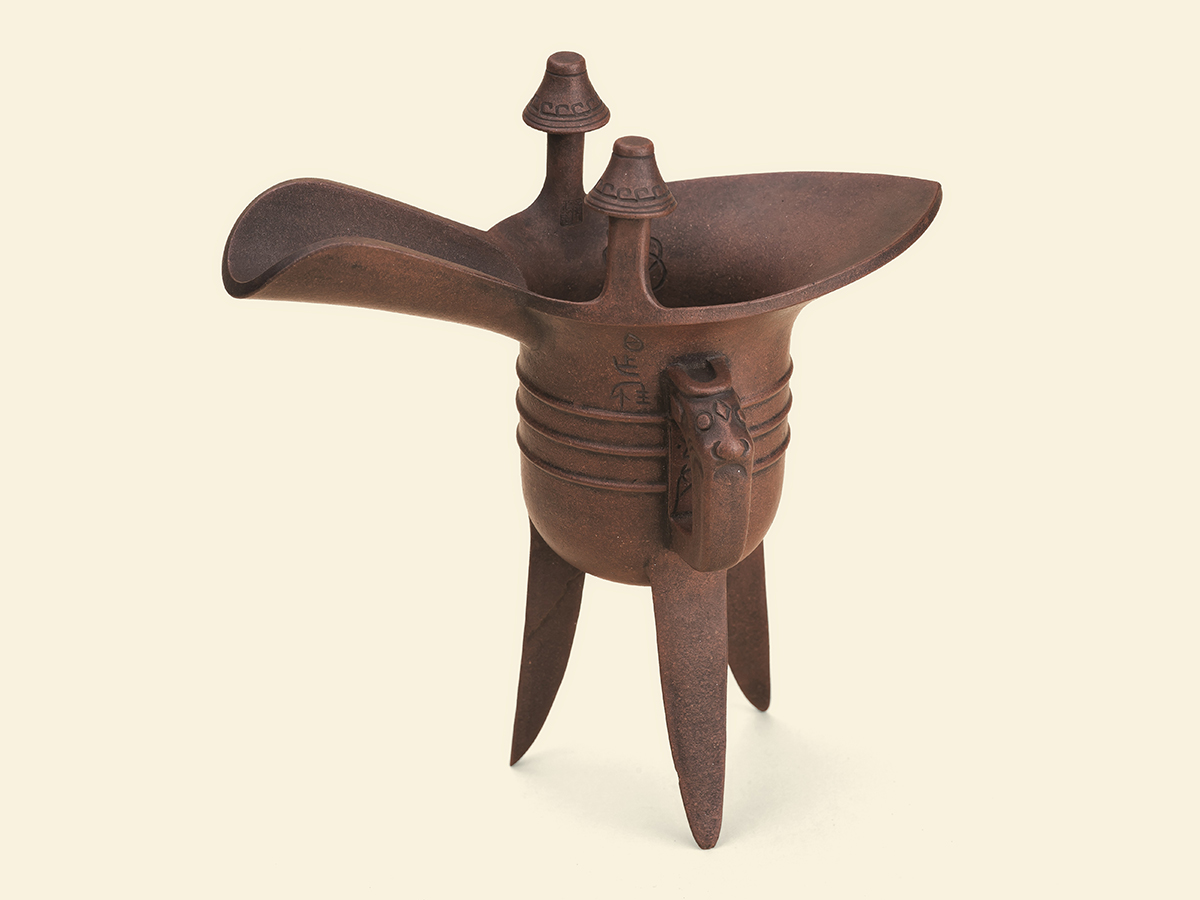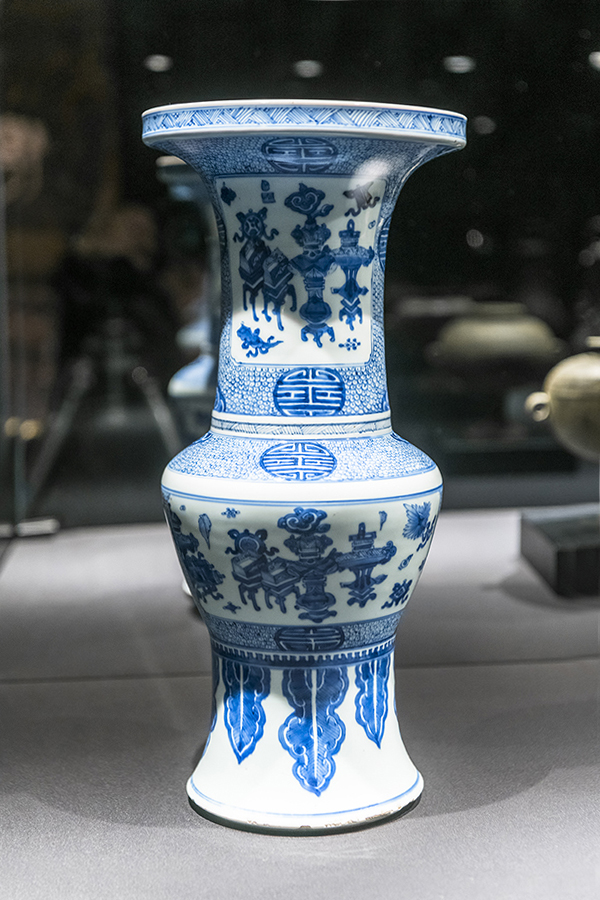Chinese Rites and Rituals
Chinese ritual bronzes were status symbols for rulers and aristocrats in the Shang and Zhou dynasties. The amount of food or wine containers and musical instruments used in the rituals were carefully chosen to reflect the different ranks of the nobility. By the Eastern Zhou dynasty, with Confucianism rising to become a significant ethical and philosophical belief system, rituals became a means to govern the state and regulate social behaviour.
From the Song and Yuan dynasties onwards, antiquarianism became influential. This is reflected in the sizeable Song imperial collection of bronze vessels from the Shang and Zhou dynasties. Many of these objects were also replicated in great quantities. During the Xuanhe reign, Wang Fu was ordered by Emperor Huizong of the Song dynasty to compile the Xuanhe Bogu Tu (Illustrated Catalogue of Antique Objects from the Xuanhe Hall). This catalogue records the vast imperial collection of bronze vessels that date from the Shang to the Tang dynasties, exerting a great influence on the development of later vessel forms.
Throughout the history of China, the Zhou dynasty was regarded by many rulers and literati figures as the pinnacle of state rituals. The Qianlong Emperor, for instance, exhorted his court and craftsmen to produce objects in emulation of archaic bronze vessels. These come in various mediums such as jade, bamboo, and painted enamels; as well as in various shapes such as ding, zun, hu, and gu. The emperor’s allusion to concepts of “antiquity”, “rites of Zhou”, and “antiquarianism” not only harks back to the origin of traditional Han philosophy, but also allows him to create a specific ritual system that fused old and new vessels. For instance, the mention in Huangchao Liqi Tushi (Illustrated Regulations for Ceremonial Paraphernalia of the Qing Dynasty) of the “ritual vessels designated by imperial order in the thirteenth year of Qianlong reign” point to the symbolic function of both the rituals and the vessels employed. As a result, the message of centralised imperial power could be delivered even to those who never had a chance to meet the emperor in person. Moreover, the Qianlong Emperor also made the unprecedented decision to include Western paraphernalia and procession equipment in the category of ritual and ceremonial objects in the same illustrated regulations. Other changes include the replacement of bronze vessels with porcelains for use in ceremonies. In subsequent reigns, even colourful porcelains were used. For instance, the five offerings mentioned in Da-Qing Huidian (Collected Statutes of the Great Qing) were used exclusively for ceremonies at the Temple of Heaven during the Kangxi reign. During the Yongzheng and Qianlong reigns, however, they also appeared in rituals conducted by the general public.
This section introduces the functions of early bronze vessels and traces the long history of rituals and ceremonies in China. Moreover, the antiquarian movement and the new transformations that took place during the Qianlong reign also attest to the timeless quality of Confucian ideals as well as the various innovative attempts in updating rituals throughout history.
Information provided by the Poly Art Museum
Bronze
On loan from the Poly Art Museum
This Xu is a type of food vessel used approximately 2,900 years ago in the mid-Western Zhou period. The lid that originally came with it is no longer extant. In spite of its deceptively plain design, the bottom of the vessel has a 98-character-long engraved inscription about such impoortant concepts as “Great Yu controls the water” and “governing the state by means of virtue”. As the earliest extant record about these related texts, this object is of great import in the studies of anicent China.
Wine Ritual Vessels
Food Ritual Vessels
Musical Instruments
Weapons
Chinese Bronzes in the Eastern Zhou Period to the Han Dynasty (ca. 771 BCE-9CE)
Archaism
Suigong Xu Food Vessel
Mid-Western Zhou Period (ca. 900 BCE)Bronze
On loan from the Poly Art Museum
This Xu is a type of food vessel used approximately 2,900 years ago in the mid-Western Zhou period. The lid that originally came with it is no longer extant. In spite of its deceptively plain design, the bottom of the vessel has a 98-character-long engraved inscription about such impoortant concepts as “Great Yu controls the water” and “governing the state by means of virtue”. As the earliest extant record about these related texts, this object is of great import in the studies of anicent China.
Suigong Xu Food Vessel
Mid-Western Zhou Period (ca. 900 BCE)Bronze
On loan from the Poly Art Museum
This Xu is a type of food vessel used approximately 2,900 years ago in the mid-Western Zhou period. The lid that originally came with it is no longer extant. In spite of its deceptively plain design, the bottom of the vessel has a 98-character-long engraved inscription about such impoortant concepts as “Great Yu controls the water” and “governing the state by means of virtue”. As the earliest extant record about these related texts, this object is of great import in the studies of anicent China.
Lei Wine Vessel with Whirl Motifs
Shang Dynasty (ca. 17th - 11th century BCE)Bronze
On loan from the Poly Art Museum
Jue Wine Vessel Dedicated to Fu Yi
Western Zhou Period (ca. 1046 - 771 BCE)Bronze
On loan from the Poly Art Museum
A Pair of Hu Wine Vessels with Dragon Motifs
Spring and Autumn Period (ca. 770 - 476 BCE)Bronze
On loan from the Poly Art Museum
You Wine Vessel with Animal Mask
Western Zhou Dynasty (ca. 1046 - 771 BCE)Bronze
On loan from the University Museum and Art Gallery, The University of Hong Kong
You Wine Vessel
Early Western Zhou Period (ca. 11th - 9th century BCE)Bronze
On loan from the Hong Kong Museum of Art
Hushu Zuo Pengsi Gui Food Vessel
Western Zhou Period (ca. 1046 - 771 BCE)Bronze
On loan from the Poly Art Museum
Gong Zhong Gui Food Vessel
Western Zhou Period (ca. 1046 - 771 BCE)Bronze
On loan from the Poly Art Museum
A Pair of Shufeng Gui Food Vessels
Western Zhou Period (ca. 1046 - 771 BCE)Bronze
On loan from the Poly Art Museum
Li Food Vessel with Cloud Design
Shang Dynasty (ca. 17th – 11th century BCE)Bronze
On loan from the University Museum and Art Gallery, The University of Hong Kong
Gui Food Vessel with Taotie and Cloud Design
Shang Dynasty (ca. 1600 - 1046 BCE)Bronze
On loan from the University Museum and Art Gallery, The University of Hong Kong
A Set of Two Ying Hou Jiangong Zhong Bells
Western Zhou Period (ca. 1046 - 771 BCE)Bronze
On loan from the Poly Art Museum
A Set of Three Nao Bells with Taotie Motif
Shang Dynasty (ca. 17th - 11th century BCE)Bronze
On loan from the Poly Art Museum
Bo Bell with Panchi Design
Late Spring and Autumn Period to early Warring States Period (6th - 5th century BCE)Bronze
On loan from the Art Museum, The Chinese University of Hong Kong
Gift of Bei Shan Tang, 1992.0061
Bronze Helmet
Late Western Zhou Period to Early Spring and Autumn Period (ca. 8th - 6th century BCE)Bronze
On loan from the Poly Art Museum
Bimetallic Sword
Warring States Period (ca. 475 - 221 BCE)Bronze
On loan from the Poly Art Museum
Ge Blade
Zhou Dynasty (ca. 1046 - 256 BCE)Bronze
On loan from the University Museum and Art Gallery, The University of Hong Kong
Susunsong Ding Food Vessel
Spring and Autumn Period (ca. 770 - 476 BCE)Bronze
On loan from the Poly Art Museum
He Wine Vessel with a Dragon Head
Spring and Autumn Period (ca. 770 - 476 BCE)Bronze
On loan from the Poly Art Museum
Lamp on Goose-leg Stand
Western Han Period (ca. 202 BCE - 9 CE)Bronze
On loan from the Poly Art Museum
Gu Wine Vessel of the Yi Tribe
Shang Dynasty (ca. 17th - 11th century BCE)Bronze
On loan from the Poly Art Museum
Jade Gu Wine Vessel with Dragon Motifs
Qianlong Period, Qing Dynasty (1736 - 1795)Jade
On loan from the Poly Art Centre, Hong Kong
Copper Cloisonné Enamel Container with Floral Motif
Qianlong Period, Qing Dynasty (1736 - 1795)Copper cloisonné enamel
On loan from the Poly Art Centre, Hong Kong
Ding with Phoenix and Cicada Motifs
Shang Dynasty (ca. 17th - 11th century BCE)Bronze
On loan from the Poly Art Museum
Copper Tripod Cloisonné Enamel Incense Burner with Lion Knob
Qianlong Period, Qing Dynasty (1736 - 1795)Copper, cloisonné enamel
On loan from the Poly Art Centre, Hong Kong
Celadon Incense Burner
Yuan Dynasty (1271 - 1368)Longquan porcelain
On loan from the Poly Art Centre, Hong Kong
Incense Burner with Raised Line Motif
Qing Dynasty (1644 - 1911)Bronze
On loan from the Poly Art Centre, Hong Kong
Gu-shaped Zun Wine Vessel with Taotie Design
Late Qing Dynasty (late 17th – early 18th century)Bronze
On loan from the University Museum and Art Gallery, The University of Hong Kong
Hu Wine Vessel
Han Dynasty (ca.206 BCE- 220 CE)Bronze
On loan from the University Museum and Art Gallery, The University of Hong Kong
Archaic Hu Wine Vessel with Two Mask Handles in Yingqing Glaze
Song Dynasty (960 - 1279)Porcelain
On loan from the Hong Kong Museum of Art
Jue Wine Vessel
Shang Dynasty (ca. 17th - 11th century BCE)Bronze
On loan from Mr Anthony J. Hardy
Yixing Ware Jue Wine Vessel with the Mark of Chen Mingyuan
Qing Dynasty (1644 - 1911)Yixing ware
On loan from the Art Museum, The Chinese University of Hong Kong
Gift of Bei Shan Tang, 1995.0272
Hu Vessel with Tubular Handles and Kui-dragon Design
Yuan Dynasty (1271 - 1368)Bronze
On loan from the Hong Kong Museum of Art
Vase with Antiquities Design in Reserved Panels in Underglaze Blue
Kangxi Period, Qing Dynasty (1662 - 1722)Porcelain
On loan from the Hong Kong Museum of Art
